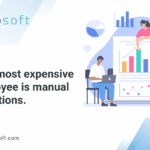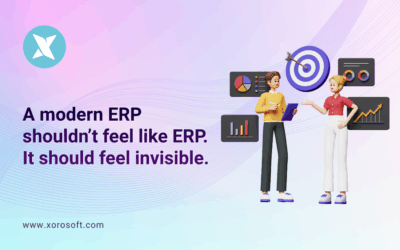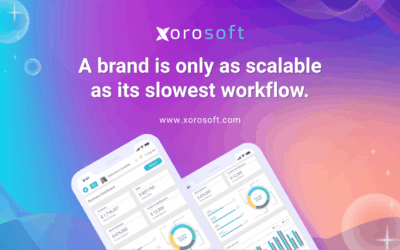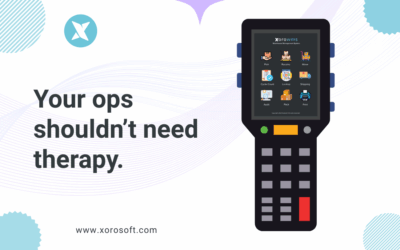
Introduction to ERP systems and their importance in compliance and regulatory reporting
As businesses strive to operate in an increasingly complex regulatory environment, the need for efficient compliance and regulatory reporting has become paramount. This is where Enterprise Resource Planning (ERP) systems come into play. An ERP system is a comprehensive suite of integrated applications that enables businesses to manage various aspects of their operations, including finance, inventory, and human resources.
The primary purpose of an ERP system is to streamline and automate business processes, resulting in improved efficiency and productivity. When it comes to compliance and regulatory reporting, an ERP system can provide a centralized platform that ensures data accuracy, integrity, and timely reporting. By leveraging the features and capabilities of an ERP system, businesses can maximize compliance and regulatory reporting efficiency, reducing the risk of non-compliance and penalties.
Understanding XoroERP: Features and benefits
One of the leading ERP solutions in the market is XoroERP, developed by Xorosoft. XoroERP is a robust and scalable system that offers a wide range of features designed to meet the specific needs of businesses in various industries. From small startups to large enterprises, XoroERP provides a comprehensive suite of tools that enable businesses to streamline their operations and improve compliance and regulatory reporting.
Some of the key features of XoroERP include inventory management, accounting, and reporting capabilities. These features are essential for businesses to maintain accurate records of their inventory, financial transactions, and comply with regulatory requirements. With XoroERP, businesses can automate mundane tasks, such as data entry and reconciliation, allowing employees to focus on more strategic activities.
The benefits of using XoroERP are numerous. Firstly, businesses can achieve greater efficiency and productivity by eliminating manual processes and reducing the risk of errors. Secondly, XoroERP provides real-time visibility into inventory levels, enabling businesses to optimize their supply chain and avoid stockouts or excess inventory. Lastly, XoroERP’s reporting capabilities allow businesses to generate accurate and comprehensive reports for compliance and regulatory purposes.
Key performance indicators (KPIs) for compliance and regulatory reporting
To effectively monitor compliance and regulatory reporting efficiency in your XoroERP system, it is essential to identify and track key performance indicators (KPIs). These KPIs can provide valuable insights into the effectiveness of your ERP system and highlight areas for improvement. Here are some essential KPIs to consider:
-
Accuracy of data entry: The accuracy of data entry is crucial for compliance and regulatory reporting. Tracking the percentage of accurate data entries can help identify any issues with data quality and ensure the integrity of reported information.
-
Timeliness of reporting: Timely reporting is vital to comply with regulatory requirements. Monitoring the time taken to generate and submit reports can help identify any bottlenecks in the reporting process and ensure compliance deadlines are met.
-
Number of regulatory violations: Tracking the number of regulatory violations can provide insights into the effectiveness of your compliance measures. By monitoring this KPI, businesses can proactively address any issues and minimize the risk of non-compliance.
-
Audit trail completeness: An audit trail is a chronological record of all transactions and activities within your ERP system. Monitoring the completeness of the audit trail ensures that all relevant information is captured and can be easily retrieved for compliance purposes.
-
Integration with external systems: Many businesses have to integrate their ERP system with external systems, such as tax software or regulatory reporting platforms. Monitoring the success rate and efficiency of these integrations can help ensure seamless data transfer and accurate reporting.
By tracking these KPIs in your XoroERP system, businesses can identify areas of improvement and take proactive measures to enhance compliance and regulatory reporting efficiency.
Monitoring inventory management with XoroERP
Effective inventory management is crucial for businesses to meet customer demand, optimize cash flow, and comply with regulatory requirements. XoroERP offers robust inventory management features that allow businesses to track and control their inventory levels accurately.
One important KPI to monitor in XoroERP is the inventory turnover ratio. This ratio indicates how quickly a business sells its inventory and replenishes it. By tracking the inventory turnover ratio, businesses can identify slow-moving or obsolete inventory and take corrective actions, such as implementing promotional campaigns or liquidating excess stock.
Another key KPI is the inventory accuracy rate. This KPI measures the consistency between the physical inventory count and the inventory records in XoroERP. By regularly conducting physical inventory counts and comparing them to the system records, businesses can identify any discrepancies and take corrective measures to improve inventory accuracy.
Additionally, businesses can monitor the lead time for inventory replenishment. This KPI measures the time it takes to order and receive new inventory. By reducing the lead time, businesses can minimize stockouts and ensure timely product availability, improving customer satisfaction and compliance with regulatory requirements.
XoroERP’s inventory management features provide businesses with the tools and insights necessary to optimize inventory levels, reduce costs, and comply with regulatory requirements.
Streamlining accounting processes with XoroERP
Accurate and efficient accounting processes are essential for compliance and regulatory reporting. XoroERP offers comprehensive accounting features that enable businesses to streamline their financial operations and ensure accurate reporting.
One important KPI to monitor in XoroERP is the accounts receivable turnover ratio. This ratio measures how quickly a business collects payments from its customers. By tracking the accounts receivable turnover ratio, businesses can identify any issues with payment collection and take appropriate actions, such as implementing credit control measures or improving invoicing processes.
Another key KPI is the accounts payable turnover ratio. This ratio indicates how quickly a business pays its suppliers. By monitoring the accounts payable turnover ratio, businesses can identify any delays in payment processing and take corrective actions, such as optimizing payment terms or negotiating better supplier agreements.
Additionally, businesses can monitor the accuracy and completeness of financial statements generated by XoroERP. Regularly reviewing financial statements for accuracy and completeness ensures compliance with accounting standards and regulatory requirements.
XoroERP’s accounting features provide businesses with the tools and insights necessary to streamline their financial processes, improve cash flow, and comply with regulatory reporting requirements.
Ensuring data accuracy and integrity in XoroERP
Data accuracy and integrity are crucial for compliance and regulatory reporting. XoroERP offers robust data management features that ensure the accuracy and integrity of data within the system.
One essential KPI to monitor in XoroERP is the data error rate. This KPI measures the percentage of data errors within the system. By tracking the data error rate, businesses can identify any issues with data quality and take corrective actions, such as implementing data validation rules or providing additional training to employees.
Another important KPI is the data duplication rate. This KPI measures the percentage of duplicate data within the system. By monitoring the data duplication rate, businesses can identify any issues with data integrity and take appropriate actions, such as implementing data deduplication processes or improving data entry controls.
Additionally, businesses can monitor the data access control effectiveness within XoroERP. This KPI measures the effectiveness of access controls in preventing unauthorized access to sensitive data. By regularly reviewing and enhancing data access controls, businesses can ensure data confidentiality and compliance with data protection regulations.
XoroERP’s data management features provide businesses with the tools and capabilities necessary to ensure data accuracy, integrity, and compliance with regulatory requirements.
Reporting capabilities of XoroERP for compliance and regulatory requirements
Reporting is a critical aspect of compliance and regulatory requirements. XoroERP offers robust reporting capabilities that enable businesses to generate accurate and comprehensive reports for various compliance purposes.
One important KPI to monitor in XoroERP is the report accuracy rate. This KPI measures the consistency and accuracy of the reported information. By tracking the report accuracy rate, businesses can identify any issues with data accuracy or reporting processes and take corrective actions to improve report quality.
Another key KPI is the report generation time. This KPI measures the time taken to generate reports within XoroERP. By monitoring the report generation time, businesses can identify any bottlenecks in the reporting process and take appropriate actions to streamline report generation and ensure timely compliance.
Additionally, businesses can monitor the report customization capabilities of XoroERP. This KPI measures the flexibility and ease of customizing reports to meet specific compliance requirements. By leveraging the report customization capabilities of XoroERP, businesses can ensure that their reports contain all the necessary information and comply with regulatory requirements.
XoroERP’s reporting capabilities provide businesses with the tools and flexibility necessary to generate accurate and comprehensive reports for compliance and regulatory purposes.
Integration capabilities of XoroERP with other systems for seamless reporting
Many businesses need to integrate their ERP system with external systems for seamless reporting. XoroERP offers robust integration capabilities that allow businesses to connect with other systems, such as tax software or regulatory reporting platforms.
One important KPI to monitor in XoroERP is the integration success rate. This KPI measures the percentage of successful integrations with external systems. By tracking the integration success rate, businesses can identify any issues with data transfer or compatibility and take appropriate actions to ensure seamless integration and accurate reporting.
Another key KPI is the integration time. This KPI measures the time taken to complete integrations with external systems. By monitoring the integration time, businesses can identify any delays or inefficiencies in the integration process and take corrective actions to streamline integration and improve reporting efficiency.
Additionally, businesses can monitor the data mapping accuracy between XoroERP and external systems. This KPI measures the consistency and accuracy of data mapping rules used in integrations. By regularly reviewing and updating data mapping rules, businesses can ensure accurate data transfer and compliance with reporting requirements.
XoroERP’s integration capabilities provide businesses with the tools necessary to seamlessly connect with external systems, ensuring accurate and timely reporting for compliance and regulatory purposes.
How Xorosoft ERP solutions can optimize compliance and regulatory reporting efficiency
Xorosoft offers comprehensive ERP solutions, such as XoroERP, that are specifically designed to optimize compliance and regulatory reporting efficiency. By leveraging the features and capabilities of XoroERP, businesses can streamline their operations, ensure data accuracy and integrity, and generate accurate and comprehensive reports for compliance purposes.
XoroERP’s robust inventory management features enable businesses to optimize inventory levels, reduce costs, and comply with regulatory requirements. The accounting capabilities of XoroERP streamline financial processes, improve cash flow, and ensure accurate reporting. XoroERP’s data management features ensure data accuracy, integrity, and compliance with regulatory requirements. The reporting capabilities of XoroERP enable businesses to generate accurate and comprehensive reports for compliance purposes. Additionally, XoroERP’s integration capabilities allow seamless data transfer and reporting with external systems.
By implementing Xorosoft ERP solutions, businesses can maximize compliance and regulatory reporting efficiency, reducing the risk of non-compliance and penalties.
Conclusion: The importance of monitoring KPIs in your XoroERP system for compliance and regulatory reporting efficiency
In today’s complex regulatory environment, businesses must prioritize compliance and regulatory reporting. By monitoring key performance indicators (KPIs) in your XoroERP system, businesses can effectively measure and optimize compliance and regulatory reporting efficiency.
From accuracy of data entry to integration with external systems, each KPI provides valuable insights into the effectiveness of your XoroERP system and highlights areas for improvement. By tracking these KPIs, businesses can identify bottlenecks, take proactive measures, and ensure compliance with regulatory requirements.
XoroERP, developed by Xorosoft, offers a comprehensive suite of features and capabilities designed to optimize compliance and regulatory reporting efficiency. By leveraging XoroERP’s inventory management, accounting, data management, reporting, and integration capabilities, businesses can streamline their operations, ensure data accuracy and integrity, and generate accurate and comprehensive reports for compliance purposes.
To experience the power of XoroERP firsthand, book a demo with Xorosoft today!









